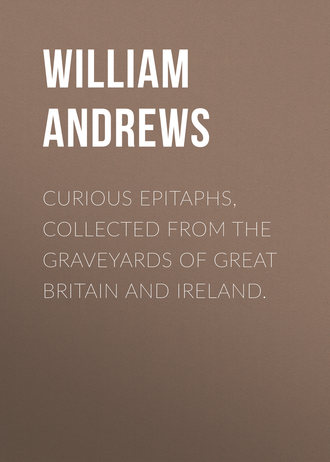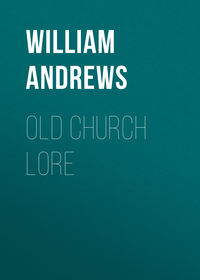 полная версия
полная версияCurious Epitaphs, Collected from the Graveyards of Great Britain and Ireland.
We believe that the foregoing is a unique epitaph, at all events we have not heard of or seen any other monumental inscription in short-hand.
The following curious epitaph is from Wirksworth, Derbyshire: —
Near this place lies the body ofPhilip Shullcross,Once an eminent Quill-driver to the attorneys in this Town. He died the 17th of Nov. 1787, aged 67.
Viewing Philip in a moral light, the most prominent and remarkable features in his character were his zeal and invincible attachment to dogs and cats, and his unbounded benevolence towards them, as well as towards his fellow-creatures.
To the CriticSeek not to show the devious paths Phil trode,Nor tear his frailties from their dread abode,In modest sculpture let this tombstone tell,That much esteem’d he lived, and much regretted fell.At Castleton, in the Peak of Derbyshire, is another curious epitaph, partly in English and partly in Latin, to the memory of an attorney-at-law named Micah Hall, who died in 1804. It is said to have been penned by himself, and is more epigrammatic than reverent. It is as follows: —
ToThe memory ofMicah Hall, Gentleman,Attorney-at-Law,Who died on the 14th of May, 1804,Aged 79 yearsQuid eram, nescitis;Quid sum, nescitis;Ubi abii, nescitis;Valete.This verse has been rendered thus: —
What I was you know not —What I am you know not —Whither I am gone you know not —Go about your business.In Sarnesfield churchyard, near Weobley, is the tombstone of John Abel, the celebrated architect of the market-houses of Hereford, Leominster, Knighton, and Brecknock, who died in the year 1694, having attained the ripe old age of ninety-seven. The memorial stone is adorned with three statues in kneeling posture, representing Abel and his two wives; and also displayed are the emblems of his profession – the rule, the compass, and the square – the whole being designed and sculptured by himself. The epitaph, a very quaint one, was also of his own writing, and runs thus: —
This craggy stone a covering is for an architector’s bed;That lofty buildings raisèd high, yet now lyes low his head;His line and rule, so death concludes, are lockèd up in store;Build they who list, or they who wist, for he can build no more.His house of clay could hold no longer,May Heaven’s joy build him a stronger.John Abel.Vive ut vivas in vitam æternam.The following inscription copied from a monument at Darfield, near Barnsley, records a murder which occurred on the spot where the stone is placed: —
SacredTo the Memory ofThomas Depledge,Who was murdered at Darfield,On the 11th of October, 1841At midnight drear by this waysideA murdered man poor Depledge died,The guiltless victim of a blowAimed to have brought another low,From men whom he had never harmedBy hate and drunken passions warmed.Now learn to shun in youth’s fresh springThe courses which to ruin bring.The following singular verse occurs upon a tombstone contiguous to the chancel door in Grindon churchyard, near Leek, Staffordshire: —
Farewell, dear friends; to follow me prepare;Also our loss we’d have you to beware,And your own business mind. Let us alone,For you have faults great plenty of your own.Judge not of us, now We are in our GravesLest ye be Judg’d and awfull Sentence have;For Backbiters, railers, thieves, and liars,Must torment have in Everlasting Fires.1
“Annals of Newark-upon-Trent,” by Cornelius Brown, published 1879.
2
Black’s “Guide to Yorkshire.”






